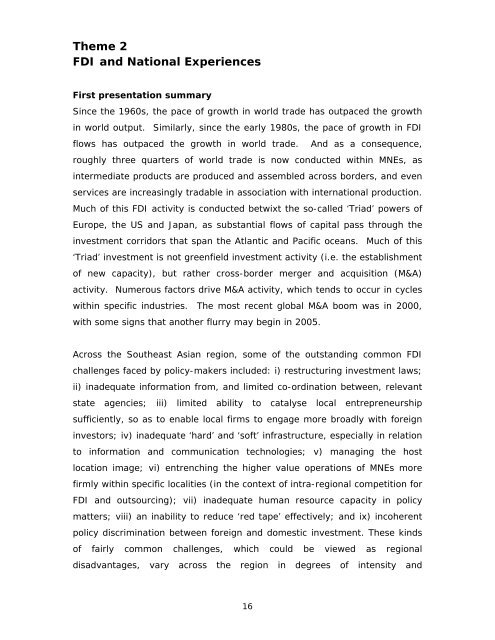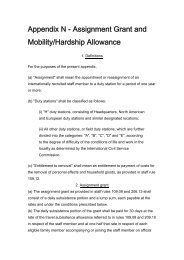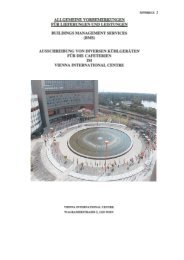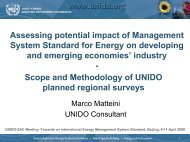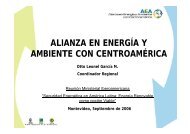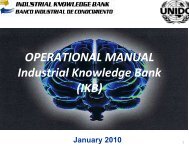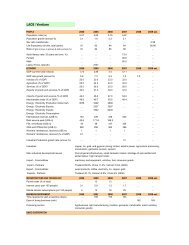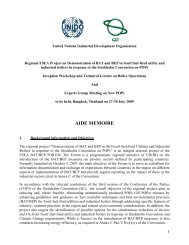Foreign direct investment in Southeast Asia: - Regional Office China
Foreign direct investment in Southeast Asia: - Regional Office China
Foreign direct investment in Southeast Asia: - Regional Office China
You also want an ePaper? Increase the reach of your titles
YUMPU automatically turns print PDFs into web optimized ePapers that Google loves.
Theme 2FDI and National ExperiencesFirst presentation summaryS<strong>in</strong>ce the 1960s, the pace of growth <strong>in</strong> world trade has outpaced the growth<strong>in</strong> world output. Similarly, s<strong>in</strong>ce the early 1980s, the pace of growth <strong>in</strong> FDIflows has outpaced the growth <strong>in</strong> world trade. And as a consequence,roughly three quarters of world trade is now conducted with<strong>in</strong> MNEs, as<strong>in</strong>termediate products are produced and assembled across borders, and evenservices are <strong>in</strong>creas<strong>in</strong>gly tradable <strong>in</strong> association with <strong>in</strong>ternational production.Much of this FDI activity is conducted betwixt the so-called ‘Triad’ powers ofEurope, the US and Japan, as substantial flows of capital pass through the<strong><strong>in</strong>vestment</strong> corridors that span the Atlantic and Pacific oceans. Much of this‘Triad’ <strong><strong>in</strong>vestment</strong> is not greenfield <strong><strong>in</strong>vestment</strong> activity (i.e. the establishmentof new capacity), but rather cross-border merger and acquisition (M&A)activity. Numerous factors drive M&A activity, which tends to occur <strong>in</strong> cycleswith<strong>in</strong> specific <strong>in</strong>dustries. The most recent global M&A boom was <strong>in</strong> 2000,with some signs that another flurry may beg<strong>in</strong> <strong>in</strong> 2005.Across the <strong>Southeast</strong> <strong>Asia</strong>n region, some of the outstand<strong>in</strong>g common FDIchallenges faced by policy-makers <strong>in</strong>cluded: i) restructur<strong>in</strong>g <strong><strong>in</strong>vestment</strong> laws;ii) <strong>in</strong>adequate <strong>in</strong>formation from, and limited co-ord<strong>in</strong>ation between, relevantstate agencies; iii) limited ability to catalyse local entrepreneurshipsufficiently, so as to enable local firms to engage more broadly with foreign<strong>in</strong>vestors; iv) <strong>in</strong>adequate ‘hard’ and ‘soft’ <strong>in</strong>frastructure, especially <strong>in</strong> relationto <strong>in</strong>formation and communication technologies; v) manag<strong>in</strong>g the hostlocation image; vi) entrench<strong>in</strong>g the higher value operations of MNEs morefirmly with<strong>in</strong> specific localities (<strong>in</strong> the context of <strong>in</strong>tra-regional competition forFDI and outsourc<strong>in</strong>g); vii) <strong>in</strong>adequate human resource capacity <strong>in</strong> policymatters; viii) an <strong>in</strong>ability to reduce ‘red tape’ effectively; and ix) <strong>in</strong>coherentpolicy discrim<strong>in</strong>ation between foreign and domestic <strong><strong>in</strong>vestment</strong>. These k<strong>in</strong>dsof fairly common challenges, which could be viewed as regionaldisadvantages, vary across the region <strong>in</strong> degrees of <strong>in</strong>tensity and16


